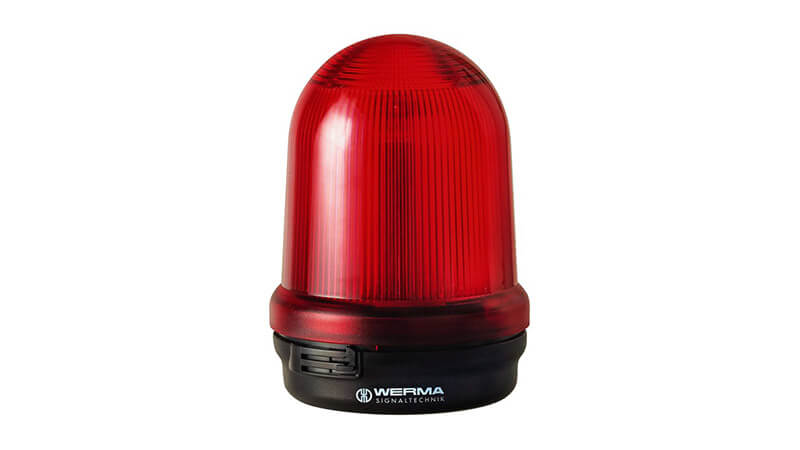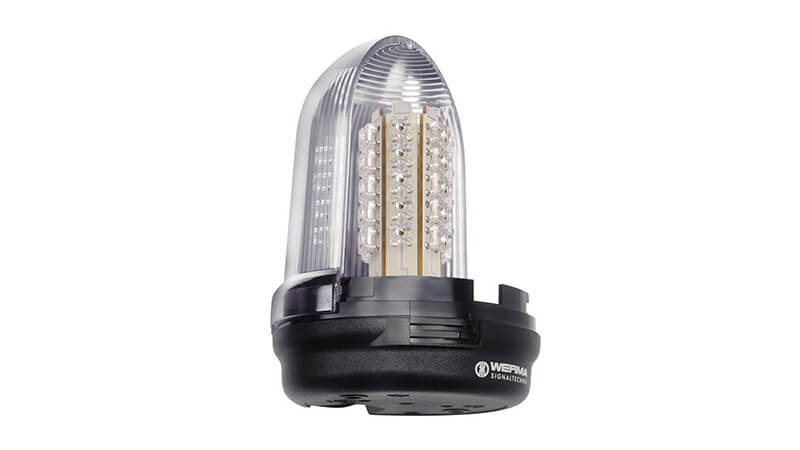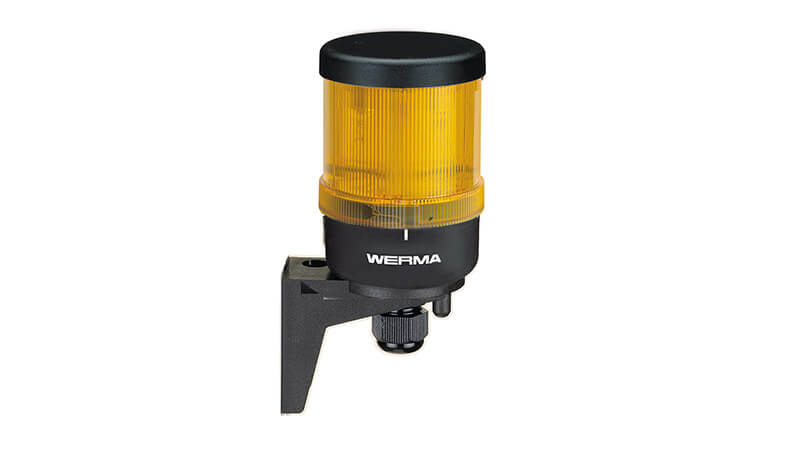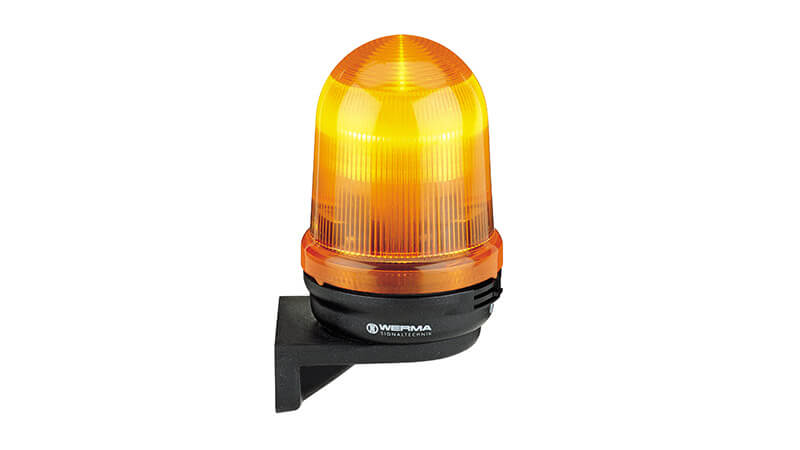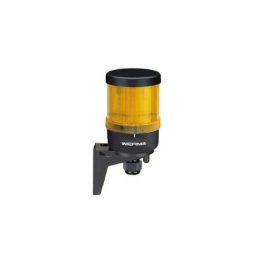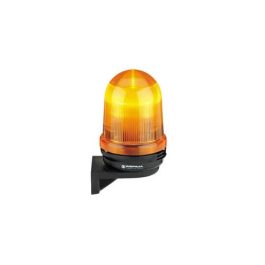Monitorable Beacons
For safety-relevant applications
What is the difference between “monitorable” beacons and “monitored” beacons?
Monitorable beacons
Should LEDs fail on our monitorable devices, the luminaire automatically switches to fault mode. This can be reliably detected e.g. via a current monitoring relay. After repeated testing of the status, it remains in error mode for 30 minutes and then checks the status again.
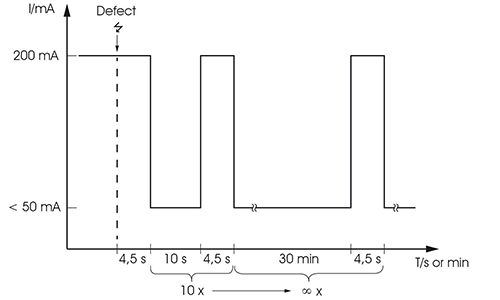
Monitored beacons
In our monitored devices a lamp monitoring is built in, which reports back the current flow of the LEDs at two galvanically isolated, potential free semiconductor outputs A and B. When the lamp is not activated, both outputs are open. If a fault occurs, at least one output is opened.



